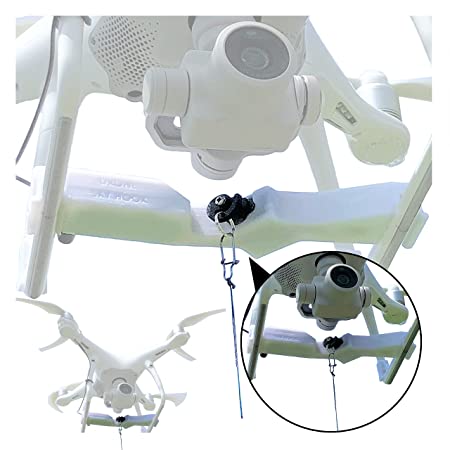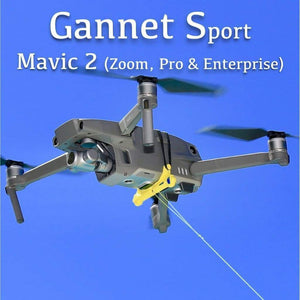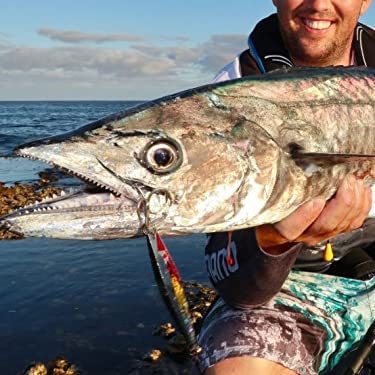
We will be looking at the basics and how to use a drone fishing rig. We'll also be discussing what to consider when choosing your drone, how to charge it, and the payload. We'll then discuss ways to get the best out of your drone. Keep reading to learn more. Soon you will have the drone of dreams! Let's begin !..., and maybe even catch a few fish.
Basic drone fishing rig
When you are ready to start drone fishing, the first thing you need is a good set of hooks. The fishing line should have a doubled length and be either mono or braided. You should tie a Uni knot or Cat's Paw Loop to it. You will also need a sinker (between two and eight ounces), and hooks to attach to every second section of the backbone. Finally, you will need to attach the lead loop of a snap swivel and end loop of your drone.
There are many methods to make a fishing helicopter. The simplest method is to attach a hook to your drone's landing gear, and spin it until the line comes free. A dropper to keep your fishing line under the drone is another option. A dropper is a device that allows you to keep your main line above the drone and avoid it becoming tangled in the propellers. Fishing drones can be outfitted with accessories such as a dock or a battery pack.
You'll need some additional equipment after you have purchased your basic drone fishing kit. You'll need a fishing line of approximately 700 meters and a bait-dropping tool. These are all optional extras, but will make your drone fishing experience more enjoyable. A good drone will give you a clearer view of your surroundings, and you'll be able to spot fish more easily.

Payload for drone fishing equipment
It is important to understand the safety precautions you must take if you intend to catch fish from a drone. You should never fly your drone in strong winds or rain. Here are some guidelines to follow:
Firstly, make sure that your drone has a solid carrying capacity. The drone will not stay stable if it is loaded with heavy lures or braided lines. If you are fishing near the seaside, wind can blow the drone off course. It's also important to check local regulations and laws, as some may not allow fishing from a drone. Once you've decided to go fishing with a drone, you need to choose one with solid carrying capacity.
The next step is to determine which accessories you'll need to mount on your drone. To reduce the weight distribution issues, it is a good idea to use a rigging system with a central attachment point. The most suitable attachment points are the motor struts, landing gear, and legs of the drone. You should avoid attaching anything to the camera or to the gimbal. This can cause damage. One simple solution is to tie a length fishing line from one end to the other. To prevent it from slipping out, tape can be used to secure the fishing line.
Battery life of drone fishing equipment
Before going out fishing with your drone, be sure to check the batteries and the other gear. This will keep your drone's battery charged and allow you to fish instead of worrying about charging it. You may be able to charge your drones using solar panels or batteries from your car. Be sure to have fully charged batteries before you begin. This will ensure your drone is ready to fly when you reach your fishing spot.

The drone's flight time is another important aspect to consider. Some models have longer flight times than others, but a drone that can fly for twenty-two minutes can easily get the job done. This is great if your goal is to spend hours on water with your drone. You should also be aware that drones with low endurance are inoperable, making it difficult to catch fish.
Once you've set up your fishing gear, attach the line clip to your drone's legs, or to your motor struts. Next, attach the bait line to the fishing line. Lock the reel when you are ready for the drone to fly. The tension will build when you pull the line out and let the drone drop the bait into the water. The battery may not work properly if it isn't charged after each use.
FAQ
Can I fly my drone within my local park
Yes, drones can be flown in parks around the world. Safety concerns mean that not all countries allow drones to be flown in parks. See our list to see where drones can be flown legally for fun.
Are you interested in flying with a drone while on the road?
Drones are becoming increasingly popular for both personal use and commercial purposes. They are used for video, filming aerial mapping, search &rescue, and many other purposes. The FAA has recently approved several new drone regulations, which include requirements for registration, licensing, pilot training, and insurance. These modifications will ensure that drones remain safe and secure for all involved.
A drone can spy on you.
Yes, anyone can fly a drone and spy on you. You can protect yourself against drones by being aware of them and avoiding areas where they might fly. Notify 911 immediately if you find a drone in your vicinity.
What is the difference between a quadcopter and a hexacopter?
A quadcopter can be described as a quadrotor helicopter with four rotors. It flies the same way as a traditional helicopter. It has four rotors that rotate independently. The hexacopter looks similar to a quadcopter, but it has six rotors rather than four. Hexacopters can be more stable and maneuverable that quadcopters.
Statistics
- According to Indeed, a drone pilot gets paid $25.73 per hour on average in the US. (dronesgator.com)
- According to industry research from ZipRecruiter , there are 10 cities where the typical salary for a Drone Pilot job is above the national average. (dronesgator.com)
- According to the multiple listing service (MLS), houses and apartments with drone photographs are up to 68 percent more likely to sell than those without pictures. (thedroneu.com)
External Links
How To
How to Fly Drones for Beginners
A drone is an unmanned aerial vehicle that can be remotely controlled and used for surveillance, aerial photography, film production, research, and other hobby purposes. Drone technology has existed since World War II. DJI introduced their Phantom series of quadcopters in 2010, but commercial use only began in 2010. Since then, there have been many different types of drones available, from beginner-friendly models like the Parrot AR Drone 2.0 to professional-grade multi-rotor craft like the DJI Mavic Pro.
There are many ways to fly a drone.
-
Remote control – This is when you attach a device to your hand that allows you to control the drone's flight path. There are two main types, On/Off switches (like radios) and joysticks.
-
Manual Control – This allows remote operation of the drone via GPS coordinates using a smartphone application. You will need to keep track of where the drone is going and follow the directions from the app.
-
Autonomous Flight - This method involves leaving the piloting duties to the drone itself. It basically flies autonomously without any human intervention. For the autonomous flight to occur, the drone must have a built-in camera and sensors capable of capturing images and data.
-
Triggered flight - This is similar to manual control except that the pilot sets up a preprogrammed route and the drone follows the route until it reaches its destination. Once the programmed route has been completed, the drone returns to the base automatically.
-
Landing Gear - Some drones come equipped with landing gear that allows them to land safely if they lose power or run out of battery during flight.
-
Goggles - Pilots may wear goggles to shield themselves from flying debris.
-
Camera - Some drones are equipped with cameras allowing you to capture photos and videos from above.
-
Obstacles. Some drones can have obstacle avoidance technology that stops them from hitting obstacles.
-
Speed - Some drones reach speeds exceeding 40 mph.
-
Battery Life - Most drones can last between 20 minutes to 3 hours, depending on how much power you're using.
-
Some drones are capable of traveling up to 30 miles depending upon their make and model.
-
Power source: Some drones will require an external power source while others can be powered by internal batteries.
-
Weight – Some drones are less than one pound, while other models can be up to four pounds.
-
Size - Drones range from small devices that fit in one's palm to large crafts that weigh more than 50 pounds.
-
Price - Drones come in a variety of price categories, including high-end models which can run into the thousands and low-cost options that can start at $100.